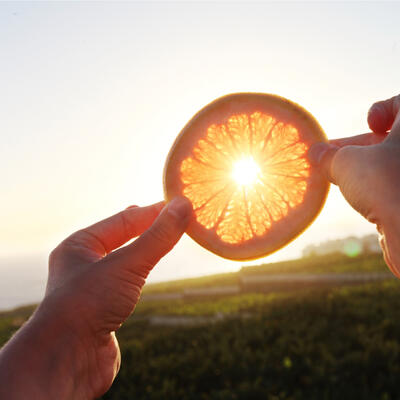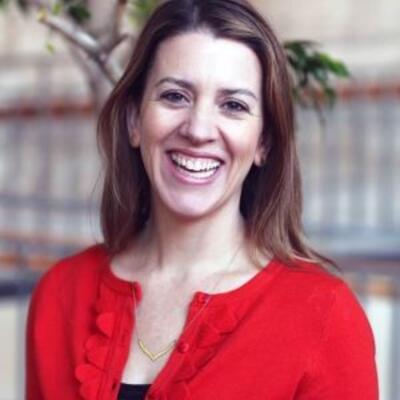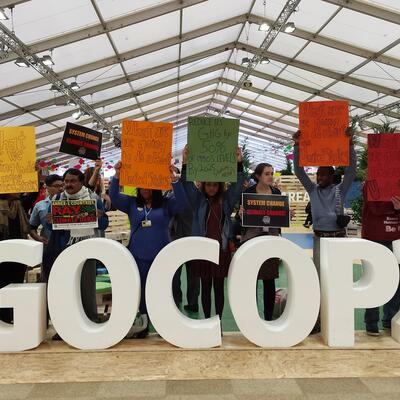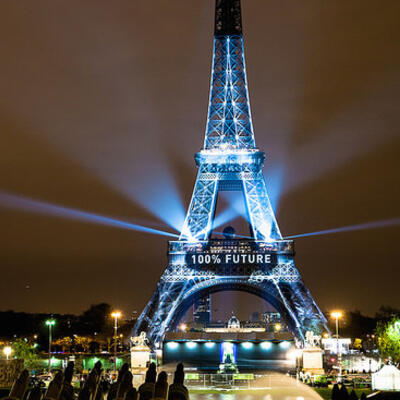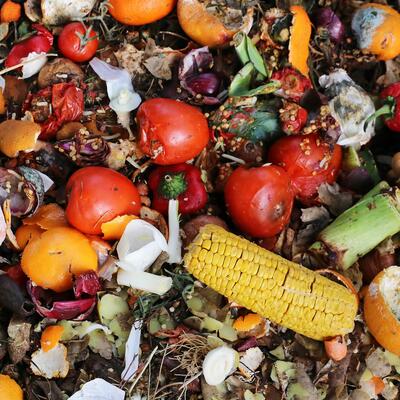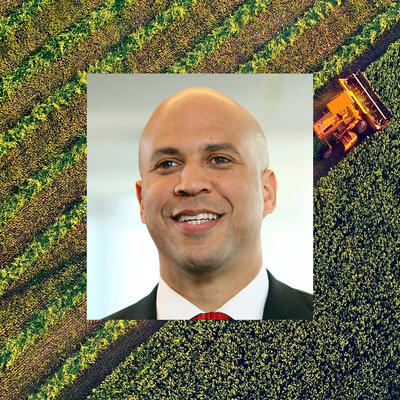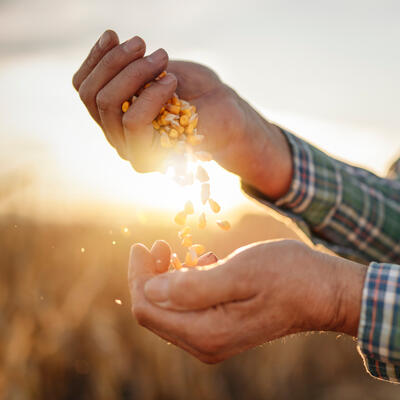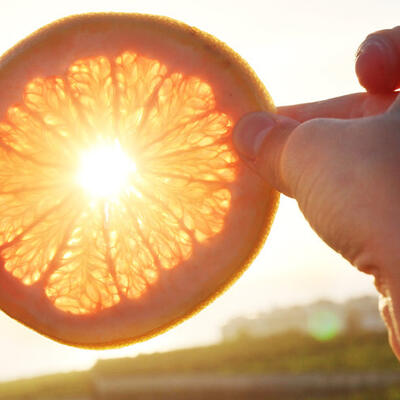
REWIND: Fate of Food / Plate to Planet
Guests
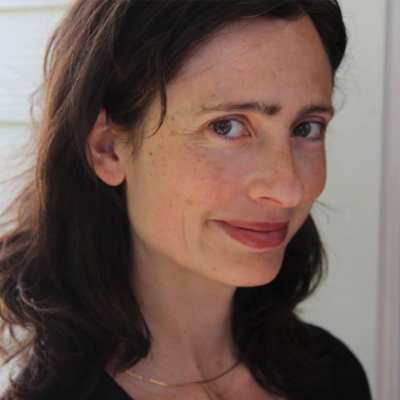
Twilight Greenaway
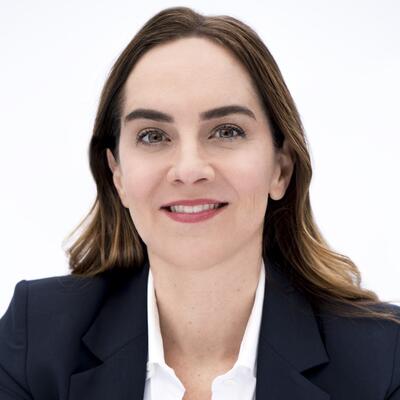
Amanda Little
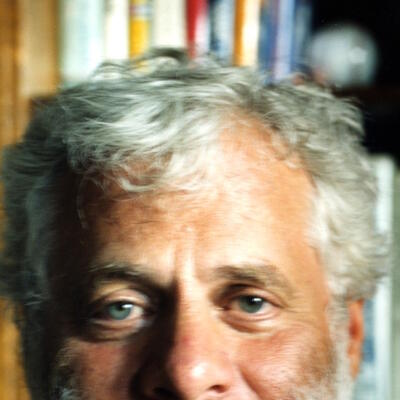
Mark Kurlansky
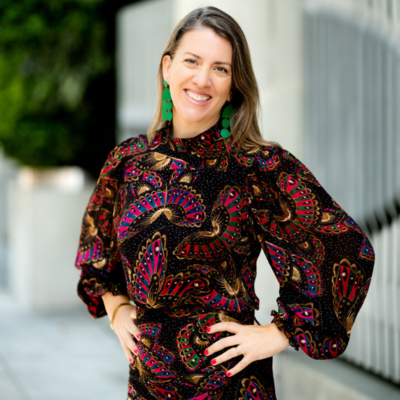
Anna Lappé
Summary
How will we feed a planet that’s hotter, drier, and more crowded than ever? Much of it starts with innovators who are trying to re-invent the global food system to be more productive and nutritious. Vanderbilt University Journalism professor Amanda Little chronicles some of these efforts in her most recent book, The Fate of Food: What We'll Eat in a Bigger, Hotter, Smarter World.
“We see disruption in the auto industry, we see disruption in tobacco – disruption is coming in the meat industry,” says Little, noting how conventional meat companies have been investing in technologies to produce cell-based meat without animals.
Other technological innovations, such as robots that can deploy herbicide with sniper-like precision, can help push agriculture toward more sustainable practices. But she also notes the difficulties that food startups face in getting their products to scale – which often means selling to large, industrial producers.
Twilight Greenaway, a contributing editor with Civil Eats, amplifies these concerns about tech disruption in the food space. “Will there be some [technology] that really can feed into a more democratic food system that allows for different types of ownership less concentrated ownership,” she asks.
Growing, packaging, producing and disposing of the food we eat makes up a big part of our climate footprint. And it’s easy to send blame down the supply chain. Can environmentalists, farmers and ranchers all get along?
Anna Lappé’s research into global food production has convinced her that they can -- if everyone works together toward the shared goal of fixing the climate. “A lot of environmentalists are starting to realize that farmers really are both on the front lines of the climate impacts, but also they’re on the front lines of the climate solutions,” Lappé says.
Author Mark Kurlansky agrees that we should be looking for solutions -- not pointing fingers. “Most farmers and most ranchers and most fishermen do not want to do harm,” says Kurlansky. “They do want to earn a living. And if their ways of earning a living are doing harm, you know, you have to convince them that there's a better way to do it.”
RELATED LINKS
The Fate of Food: What We'll Eat in a Bigger, Hotter, Smarter World
Climate Change-Fueled Valley Fever is Hitting Farmworkers Hard
MILK! A 10,000 Year Food Fracas
Full Transcript
Announcer: This is Climate One, changing the conversation about energy, economy and the environment.
On today’s program, we go from plate to planet. Food writer Anna Lappé remembers reading a United Nations report that made the connection between climate change and livestock production.
Anna Lappé: At the time it was about 18% of all global greenhouse gas emissions, which was more than every single train, plane and automobile. And I remember thinking, why isn’t everybody talking about this?
Producing the food we eat makes up a big part of our climate footprint. But Mark Kurlansky says we should be looking for solutions - not pointing fingers.
Mark Kurlansky: Most farmers and most ranchers and most fishermen do not want to do harm. They do want to earn a living. And if their ways of earning a living are doing harm, you know, you have to convince them that there's a better way to do it.
Announcer: Mark Kurlansky and Anna Lappé: Plate to planet. Up next on Climate One.
---
Announcer: Is the solution to climate change at the end of your fork?
Welcome to Climate One, hosted by Greg Dalton.
The connection between global warming and the dinner table isn’t always obvious when we go to the grocery store. But our choices about how we put food on our plates, and what we do with the waste, contribute to as much as one third of total greenhouse-gas emissions. How can we continue to feed a crowded planet without destroying it in the process?
Today, Greg talks food with two of the country’s most influential writers on the topic. Anna Lappé examines the climate crisis within our food system in her book “Diet for a Hot Planet: The Climate Crisis at the End of Your Fork and What You Can Do About It.” A generation ago, her mother Frances Moore Lappé published the revolutionary “Diet for a Small Planet.”
Mark Kurlansky has explored global food history in his best-selling books “Cod” and “Salt.” His latest is “Milk: A 10,0000 Year Food Fracas.”
Here’s their conversation.
---
PROGRAM PART 1
Greg Dalton: Anna Lappé, in 2006, you read a famous report called Livestock's Long Shadow. How did that set you on the course that you've been writing about, you come from a food family but how did that – yeah.
Anna Lappé: I do. Yeah, so it’s not the most dramatic story to tell about how you get sparked about an idea. I was sitting in my Brooklyn brownstone apartment reading a study from the United Nations. But it was really striking to me. It was a report that for the first time experts really tried to piece together the full climate story of livestock and really try to determine if we look at the whole picture, not just the food they’re eating and not just the methane they’re emitting and not just the transport but all of it together, what do we get? And what they found is that livestock as a whole sector emitted about at the time it was about 18% of all global greenhouse gas emissions, which was more than every single train, plane and automobile at the time. And I remember thinking, why isn’t everybody talking about this? And then of course you start peeling the layers even more. We don't just eat meat and dairy, we consume a lot of other things and you look at the whole story of food related, food sector related emissions. And today that figure is about 30% so you heard in your intro you said 14% is agriculture, well that’s direct agricultural emissions. But put it all together all of the aspects of food production from seed to plate to landfill. And you’re talking about a third of the crisis. So I got really inspired to dig in and I ended up writing a book about it and to this day continue to explore these questions of how food connects to climate.
Greg Dalton: And we’ll talk about that at this hour. Mark Kurlansky, you write that milk is the most argued over food in human history and also the most regulated. So how is it the most argued over? That surprised me.
Mark Kurlansky: Well, it’s always been argued over for like 10,000 years. And it’s not surprising if you think about it. I mean what is milk; it’s this bodily fluid that we’re supposed to feed to our babies. And, you know, nobody knows when this moment was, I would have loved to have been there when, you know, either the mother couldn't produce enough milk or the mother had died and somebody said, oh, look at that goat over there. Maybe we can use that. So always tremendous arguments about mother's milk versus animal milk and many other things. The thing about milk arguments is that they don't go away because they don't get resolved. They just get more and more, we keep adding to them. So there's newer milk arguments and there’s really old arguments. I guess the oldest one is whether you should use animals and then after that, which animals you should use, which hasn't been resolved. The arguments about raw milk versus pasteurization which came about in the 19th century haven’t been resolved and, you know, we have newer ones about GMO crops for food, for feed and –
Greg Dalton: I’ve read about donkey milk and camel milk in your book. Those were new to me. I haven't heard those before and we had people here recently with pea milk where you can make bathroom jokes about that. But it’s like milk from peas so there's lots of milk substitutes out there.
Mark Kurlansky: Well, milk substitutes aren’t new. The Catholic Church, there was this belief in the Middle Ages that milk was blood. And so it was a kind of blood, a white blood. And the church did not allow the consumption of blood or red meat on holy days which were about half the days of the calendar.
So that meant that you couldn't use milk on holy days. So what they did is they use almond milk. They use lots of almond milk in the Middle Ages and if you look at medieval recipes they’ll say, you know, take a cup of milk or almond milk meaning, you know, depending on which day on the calendar it is.
Greg Dalton: We wanted to talk to an actual dairy farmer as we’re talking about milking cows and methane. So we talked with the CEO of Saint Benoit Creamery he’s talking about some of his company’s business decisions.
[Start Clip]
Eric Batum: I’m Eric Batum, I’m the CEO of Saint Benoit Creamery. We are a small creamery in Sonoma, California. And our milk is very little processed; it’s low pasteurized and it cannot travel much. We are completely non GMO and organic. So we know the animals are well-treated this is very important to us.
The second thing is that we get milk from Jersey cows and Jersey cows like to go on pasture. So they’re not cows that like to sit on the farm like Holsteins could be. They’re on pasture all year long. Of course one of the sacrifice is that when you go with this kind of breed the productivity or the amount of milk that’s produced by cow in a day is certainly less than it can be with a lazy Holstein. The costs or the price that we paid the farmer for the milk is much more, way more almost three times the price of a regular Holstein cow. So our products are not cheap, our products are I would say expensive in the markets, but it's also for a clientele that is caring about the environment, caring about the animals and caring about having good food for themselves or for their families.
[End Clip]
Greg Dalton: That’s the CEO of the Saint Benoit Creamery, Eric Batum. So Anna Lappé, there's a lot in there, a poke at Holstein cows, we’ll get Mark Kurlansky on that. But the idea that wholesomeness and economic value, environmental concern costs more, is that elitist, is that true?
Anna Lappé: Well, is it true and is it elitist are different questions I think. I would say that, you know, if you wanna talk about elitism I would think the entire way our current food system is structured is inherently elitist where the worst paid folks in our economy are in the food sector, you know, where you have an entire concentration of wealth where some of the best paid CEOs are in the food sector and at the same time you have farmworkers barely able to feed themselves. You know that to me is the elitist dynamic of our food system.
To the cost question, you know, does it cost more to say support, you know, I don’t know how many of you have had that product. I have, it’s quite delicious, and it is quite expensive. It can certainly cost more to say the individual consumer in the marketplace and part of that is because we are paying the true cost of our food when you’re paying more and you're actually giving more of your dollar to the farmer. But what is exciting to me when we start looking at these sustainability solutions is that actually I like to tell the story that ultimately they are going to cost us a whole lot less.
Because the kinds of practices that sustainable farmers are using on their land don't incur the cost that you and I all incur in our taxpayer dollars when we have to spend money to pay for the pollution that's caused by agriculture or pay for all the other externalities as economists like to call it about our current industrial system.
So to me the real story is this way of farming that's going to be more in concert with nature is ultimately going to save us a lot of money particularly when it comes to how we can harness sustainable food to reduce greenhouse gas emissions and help fix the climate.
Greg Dalton: And a lot of people look for that grass fed, grass finished. Mark Kurlansky, grass-feeding is actually cheaper than grain. So why don’t more farmers do the ranchers did?
Mark Kurlansky: Well it’s like all of these things, you know, they come with a catch. It is cheap if you have the right kind of climate, you know, Ireland –
Greg Dalton: And enough grass.
Mark Kurlansky: Well, because you have the right climate, yeah. But on the other hand grass fed produces less. So there's always, you know, an economic, I find having talked to a lot of farmers all over the world. One thing I consistently find is that these farmers are looking for a formula that works. Rarely do you find somebody saying, well you can find people sometimes saying, you know, I want to be organic. I've talked to a lot of people said they wanted to be organic and they couldn’t make it work. But basically they're looking for a formula that works. If you don’t do anything if you just do all the things that you’re supposed to do, which evolving devise to try to make milk cheap. I mean cows probably aren't the best milk but they’re the best milkers, you know, and Holsteins have been bred to be the best producing cow. It’s not necessary the best milk but the most productive. And not terrible milk necessarily, you know. But if you do all that stuff like you're supposed to do then you're kind of stuck with the milk price the U.S. government’s milk price in this country or, you know, in Australia it’s the supermarkets that determine the milk price there. Somebody is always setting a low milk price. And if you charge more than that price people won’t buy your milk because it's more expensive unless you do something special. So that's why farmers are always thinking well maybe if I’m organic, maybe if I’m GMO free.
Greg Dalton: So you say that farmers, ranchers do that because of the price premium not because of some environmental ethic it's really –
Mark Kurlansky: Well sometimes but often not, you know. I talked to this guy he produces this very popular milk in the Hudson Valley which is near New York City and he sells his stuff in the green markets in New York for a good price and it’s a really nice milk. And it’s GMO free and it says on the bottle GMO free and I said to him, I said, “So do you think that GMO feed is bad?” And he said, “No, I don’t think so but, you know, people really like it when you say GMO free.”
Greg Dalton: And they’ll pay more. Anna Lappé.
Anna Lappé: I would say that when I’ve talked to farmers around the country and around the world. One of the most interesting I think farmers to talk to are farmers who have shifted to organic and asking them why, why did they make the choice. And one of the things that I feel like I’ve heard more than any other answer to that question is that they made the shift because they had experienced either in their own families or in their own communities they’d experienced the health impacts of growing food or raising, you know, raising crops with pesticides.
And one of my favorite farmers of all time John Kinsman, a dairy farmer in Wisconsin. He said he’d been a conventional dairy farmer multiple generations in Wisconsin the moment that everything change for him is when he woke up in the hospital and he realized he was there because the chemicals he was using on his farm. And he totally shifted his production.
Mark Kurlansky: Organic is a complicated thing. I mean I've talked to farmers who wanted to be organic because, you know, they actually feed organic food to their families and they believe in organic and so they want to do it. And in some cases, you know, organic is no longer an ecological term or something it’s a bureaucratic term; the U.S. government defines organic. And it's very difficult to do. It’s very expensive and extremely difficult to do. And I've talked to many people who wanted to be organic and just couldn't get ahead doing it.
Greg Dalton: And some of them think that organic is inhumane, Mark Kurlansky, tell us about that.
Mark Kurlansky: Yes. Yes, I’ve talked to many farmers who didn't want to be organic because they thought it was cruel to cows to not to give them medicine when they’re sick. You can give them medicine but then you can’t use them in the organic herd which is one of the many examples of how organic favors large-scale farming. Because in large-scale farming you give them the medicine and then you move it to the other herd because they maintain an organic herd, and non-organic herd. But if your family farm with 100 or 200 cows you can't really do that.
And I’ve talked to many farmers who are just really bothered by this whole idea and didn't want to do it. And in fact, there is an organization that certifies farms as animal friendly and they won't certify organic farms.
---
Announcer: You’re listening to a Climate One conversation about growing and eating the foods we love. Coming up, how farmers and environmentalists can work together.
Anna Lappé: This food sector is a place where we’re seeing real climate solutions and a lot of environmentalists are starting to realize that farmers who really are both on the front lines of the climate impacts but also they’re on the front lines of the climate solutions.
Announcer: That’s up next, when Climate One continues.
---
Announcer: We continue now with Climate One. Greg Dalton is exploring the climate consequences of food production, and possible solutions, with writers Anna Lappé and Mark Kurlansky. Lappé is the author of “Diet for a Hot Planet,” and Kurlansky’s newest book is “Milk: A 10,0000 Year Food Fracas.”
Let’s continue with their conversation.
---
PROGRAM PART 2
Greg Dalton: Anna Lappé, one of the other critiques of organic is that it doesn't scale. Can't feed the world organically because it takes so much land, et cetera. Do you agree with that or do you challenge that?
Anna Lappé: Well, I definitely challenge that. I challenge that on lots of different counts. First of all, I challenge that on the fundamental frame of this question of how do we feed the world and fundamentally I think it's always important to remind ourselves that fundamentally the root causes of hunger currently today and has been for decades and decades. It's not because we aren’t producing enough food, it’s because of what food we’re producing, who has access to it, it has to do with the politics of food.
You mentioned I come from a food family so my mother Frances Moore Lappé, some of you may know, she’s been drumming home this message for decades now, which is that the root cause of hunger is scarcity of democracy and not the scarcity of food. So in other words, we could today we’re producing 2,900 calories for every man, woman and child and yet a billion people are still going hungry. So I always think it's important that we're not just having this debate about what production method is going to be best but also how do we put that into a bigger context. With that said, what thrills me about the story of organic farming or as folks especially internationally call it agroecology, agroecological farming. That’s a word I think that doesn't go over so well in English language but the principles of it are fabulous.
And what we're finding is study after study showing that actually when you're applying these agroecological principles really bringing knowledge to farming, and what I would call knowledge intensive farming versus input intensive farming, that actually yields are often comparable with say the chemical counterpart without any of the cost, the health costs and frankly the cost to the farmer of having to spend money on these inputs. We’re seeing in many places around the world, a whole movement of farmers embracing these practices, finding their farms do better. Talk about good news for climate that these agro-ecological farms studies are showing they do much better during moments of climate extremes. They do much better during times of drought, they’re better at retaining water in the soil because they’re building healthy soil. All the things that we know we’re going to need in a climate unstable future, these farms are doing well for us, you know, compared to the chemical farms that are not.
Greg Dalton: So another term that I've heard related to that which is more memorable perhaps is climate smart agriculture and yet there's some big companies that are trying to perhaps support that you might say co-op that. But what’s wrong with climate smart ag?
Anna Lappé: So yeah, so when I was researching and writing this book Diet for a Hot Planet, I used the term climate smart and climate friendly and then the book came out and I noticed some of our biggest agribusiness companies starting to use the term. And what we're finding that in this decade that we've gone from food being totally off the radar in terms of the climate conversation to being part of the climate conversation is a lot of the companies the food companies that are now part of the climate conversation in a way they don't want to be where they realize actually we’re a key driver here. You're starting to see false solutions being presented by some of these companies saying well we can, you know, one example is there’s been a lot of conversation about how we need to use our soils to get carbon dioxide out of the atmosphere and bring it back into the soils; what’s called carbon sequestration.
We’re starting to see a move by some of the biggest food companies and biggest investors in the world to do what some people are calling land grabs, basically buying up a huge swath of land to do these short-term big large-scale carbon sequestration projects that have dubious carbon sequestration benefits but are profiting some of the biggest companies in the world. So and I think it's important that we bring our critical mind to any kind of silver bullet solution that's coming from the very companies that have gotten us really into this mess.
Greg Dalton: Mark Kurlansky, is big always bad?
Mark Kurlansky: [Laughs]. I think big is not necessarily always bad. But, you know, small is usually good, you know.
[Laughter]
Greg Dalton: Is small efficient, you know, one of the classic economics is big helps drive down the cost. I guess I’m thinking of –
Mark Kurlansky: One thing I learned in spending a lot of years in studying fisheries is that efficiency is not always a good thing. It's actually sometimes a thing you want to avoid.
Greg Dalton: We have a cult of efficiency sometimes, yeah. I’m thinking of a scene very memorable scene in Food, Inc. the documentary where the Walmart guys go to the farm at I’m not sure if Gary Hirschberg is there, and Walmart banned the growth hormone in milk that changed that market overnight. And probably think that's a good thing, I don't know but that's an example of a big company. When a big company makes a change it can have quite a profound impact.
Mark Kurlansky: Yeah. And I don't think you should ever have that attitude, you know. I think you should always have the attitude that you should try to work with people, you know. I do a lot of talk radio interviews and I get these people who call in environmental people and different causes that they're pushing and they talk about farmers like they’re the enemy. And I tell them, you know, you want to change things, the first thing you have to do is understand farmers and learn how to talk to them. Because the way you're talking, there isn’t gonna be any kind of communication.
Greg Dalton: Yeah. How about that Anna, we don’t, you know, talk to people who disagree with as much in this country anymore, and certainly a lot of people maybe if you go to farmers’ market you talk to people who produce food. But for a lot of environmentalists, ranchers and farmers are the villains. Anna Lappé.
Anna Lappé: Well I’m just gonna say I mean I think that story is changing too a little bit. And just to correct the historical record on the Walmart and banning that growth hormone. Really what pushed that movement away from this artificial growth hormone or VGH where as far as I know no dairy farmers are using it today, was dairy farmers and consumers together really putting a stand up against you know saying –
Mark Kurlansky: They didn’t like the results.
Anna Lappé: But on this question about, you know, these farmers and ranchers and environmentalists, you know, can we all be friends. What has been encouraging to me again over the past real decade of this conversation about climate and food is that we’re seeing I think new alliances and a deepening of understanding of how it’s certainly not helpful to pit ourselves as opponents if we have the shared goal of fixing the climate. And to me again, this food sector is a place where we’re seeing real climate solutions and a lot of environmentalists are starting to realize that farmers who really are both on the front lines of the climate impacts but also they’re on the front lines of the climate solutions. They are the ones who are really the stewards of our soils which again is one of the biggest carbon sinks on the planet.
And that when you bring this ecological practices to the farm, you're seeing a real power for biodiversity to go up, you’re seeing a huge push toward agroforestry bringing trees onto farms and that has incredible environmental benefits. So to me I think there is more of an understanding of how there's more ways we can work together.
Mark Kurlansky: Most farmers and most ranchers and most fishermen do not want to do harm. They do want to earn a living. And if their ways of earning a living are doing harm, you know, you have to convince them that there's a better way to do it. They really by and large are not evil people, you know. I've seen with fish farming, you know, salmon farming was started by Norwegians. And they never wanted to be the bad guys, you know, they didn't foresee that. So they have gotten concerned about how bad their image is and have recognized not all of them but some of them the Norwegians who started it actually that they’re creating problems and they're doing some things wrong and they're trying to find solutions and they will talk to people. You know, as a journalist I can sit down with them and they will say yes, X, Y and Z these things are really bad we’ve got to figure out some way to change it. That’s the kind of dialogues that have to happen.
Greg Dalton: And another thing Mark Kurlansky, you write about the shortage of workers in dairy. And there's robots coming, there’s already –
Mark Kurlansky: Yeah, there’s gonna be more and more because, you know, every farmer I talked to can't get, he can’t get help. I mean it’s a really hard job and there’s no money in it, you know, some young guy starting off usually doesn't want to do that unless, you know, the ones that do do it come from a five generation farming family or something.
Greg Dalton: The robots coming there too?
Mark Kurlansky: Robots are gonna be more and more in farming especially dairy.
Greg Dalton: Anna Lappé, are food miles overstated, exaggerated, you know, Michael Pollan educated a lot of people about food miles. Look where your food comes from. And yet some people think that food miles have been kind of overblown.
Anna Lappé: Yeah. That is one of the things I was really curious about. And actually if you look at the science around and what percentage of your, of the greenhouse gas emissions associated with the transport of your food you know what percentage of your food that is, it’s actually a relatively small percentage. But what I would sort of caution folks to do though is not say, okay then we can, you know, get this food from halfway around the world and get this food from the other half way around the world. Local is often proxy actually for a whole suite of other benefits of your food. So, you know, when a Michael Pollan is talking about supporting and buying local food, I'm pretty sure Michael is not meaning, you know, if you live near a Twinkie factory go buy the Twinkie, right.
He really means support your regional food shed. He means, you know, go to the farmers that are promoting biodiversity that are keeping your land protected from sprawl that are, you know, tending to your watershed the kind of things –
Mark Kurlansky: You don’t think the local Twinkies are better.
Anna Lappé: I don’t know. I don’t live near a Twinkie factory as far as I know.
Mark Kurlansky: You know, I -- you'd mentioned this book I’ve done, Food of a Younger Land, which was food writing that was done for the WPA in the 1930s. And the food was all local and, you know, one of the results of that that you could see was that in most places people ate really badly in the wintertime. If you read this book, you're going to think twice about being a locavore.
Greg Dalton: Well it’s a luxury that certain people in Mediterranean climates have.
Anna Lappé: Right.
Mark Kurlansky: Yes.
Anna Lappé: And, you know, I think to me what is important to realize when you bring up this food miles question and start thinking about it. It really starts drilling you down into this question of well then what is the most important thing if you care about the environmental impact of your food, or you want to eat a more climate friendly diet. It's really a question of what are you eating, how was it grown, where was it grown and because most of the percentage of greenhouse gas emissions associated with your food come from that agricultural production slice it’s about 80% to 85%. So that brings us into, you know, what have the most impact.
Greg Dalton: What is food and Anna Lappé, you have a TEDx talk about empathy for both for workers. And so talk about the collective empathy of food.
Anna Lappé: Yeah. So I was talking in that speech this idea this way that food can actually listen our innate sense of empathy. I started thinking about it as I started reflecting on the farmers and farmworkers I'd met. And started realizing that, you know, when I make food choices for myself and my family, you know, I do really think about how does this food choice not just feed my two daughters the healthiest food for them but it really does create this sense of empathy in me where I think about was there a farmworker mother living in Salinas Valley who had to be exposed to chlorpyrifos a toxic insecticide to grow the lettuce that I'm giving my kids for dinner.
And realizing that for me for instance choosing food that isn't grown with toxic pesticides, is an empathetic choice that is both really about my care for myself and really my kids but really it’s about caring for people all across the food chain. And how I think food can be this act of expression of that collective empathy for the farmer you're never going to meet, the farmworker you’re never going to meet, the butterfly and bee you’re never gonna see buzz by but you know was saved because you didn't purchase the food that was grown with the neonicotinoids that killed those bees and butterflies. So I think there is a way that it can tap us into I think a really beautiful part of human nature, which is our capacity to feel empathy.
Mark Kurlansky: Can I just talk a minute about pesticides because it’s an interesting example. You know, DDT was developed during World War II because American troops in the Pacific were getting a lot of malaria. And before DDT came along basically what farmers did was what is called biological control. Which is you bring in the bug that eats the bug that you want to get rid of. And it's a very difficult and complicated things because you're talking about, you know, invasive species, bringing in things that weren’t supposed to be there and, you know, in nature, there's always -- biologists call it the law of unintended consequences.
But research on this science just sort of went away when DDT came along and all the research went into coming up with more and more kinds of chemicals to kill them. And it’s an example of how corporations took over science and really pointed it in a wrong direction.
Anna Lappé: Yeah. I mean the figure is about 1% maybe 2% of all research dollars is going to exploring these biological control methods and the rest of it is going to this chemical model of agriculture which we’re seeing creates these pesticide treadmills.
Mark Kurlansky: Was it Dow? Who was it better living with chemicals?
Anna Lappé: Du Pont maybe yeah. They’re now one company so.
Mark Kurlansky: Right.
Greg Dalton: We’re talking about food and climate change at Climate One. I’m Greg Dalton. My guests are Mark Kurlansky, best-selling author and Anna Lappé, a food advocate and also best-selling author.
We’re gonna go to our lightning round and ask some quick questions of our guests today. First section is association. I’ll mention a noun and you mention the first thing that –
Anna Lappé: Oh this is kind of scary.
Greg Dalton: So the first thing that comes to your mind Anna Lappé if I say chocolate.
Anna Lappé: Mmm, delicious.
Greg Dalton: Mark Kurlansky. Kale.
Mark Kurlansky: Green was the first thing that came to my mind.
Greg Dalton: Anna Lappé. Quinoa.
Anna Lappé: Questions.
Greg Dalton: True or false. Anna Lappé. You have met foodies who care more about the temperature of their goat cheese than the homeless people outside their grocery store?
Anna Lappé: Have I met them? I’m not sure so.
Greg Dalton: You heard about them?
Anna Lappé: I’ve heard about them, yes.
Greg Dalton: Okay. True or false. Mark Kurlansky. 60% of people in the world are lactose intolerant?
Mark Kurlansky: That is correct.
Greg Dalton: Last question in our lightning round. True or false for Anna Lappé. You secretly dream of watching Three’s Company and eating Cheetos?
Anna Lappé: [Laughs]. You’re quoting me so I guess sometimes – in this TEDx talk I confessed that as a child we had to keep our television locked in the closet it would only come out occasionally. And, you know, the closest thing I got to junk food in the kitchen was, you know, I think a rice cracker and maybe some honey on top of it. So I said, you know, secretly sometimes I would dream of eating Cheetos and watching Three’s Company.
Greg Dalton: Alright, let’s give them a round for getting through that gauntlet of lightning round here at Climate One.
[Applause]
---
Announcer: You're listening to a conversation about changing our diet to save the planet. This is Climate One. Coming up – making hard choices at the meat counter.
Mark Kurlansky: And the guy in this heavy New York accent said, “Make up your mind lady. You wanna be a locavore or you wanna be a grass fed?”
Announcer: That’s up next, when Climate One continues.
---
Let’s get back to their discussion. Here’s Greg.
PROGRAM PART 3
Greg Dalton: So Anna Lappé, someone who wants to eat a climate friendly diet. What should they eat, what should they not do?
Anna Lappé: Well, yeah, that’s a good question. And kind of depends what your starting point is what you might need to shift off and on your plate. For the average American who is consuming about twice as much protein as their bodies can use and if you over consume protein you don't store it for later it's essentially wasted calories. I would say a really good place to start for the average American is removing some meat off that plate. We know that currently the way we’re producing our beef cattle in particular, have a really high climate footprint. And so in particular looking at shifting away from the beef you find in the supermarket. I have been digging into the evidence about, you know, is it possible that a 100% grass fed beef managed on pastures using, you know, really, really complex systems to make sure that the cattle are helping build up the soil carbon content. I think there's some really interesting science around that. Can the typical consumer find that in the supermarket, probably not. So I don’t think it’s a very helpful message.
But the good news around what does a climate friendly diet look like it's all the things that you’ve probably been hearing lots of other people talk about in terms of what’s good for your health and good for water, good for all kinds of things. It's eating more organically grown food, organic agriculture has a much lower carbon footprint uses much less energy. And again has all of those resiliency benefits. It means eating less packaged food. It means eating more in season. All these things that, you know, those are the lessons we’re learning about what a healthy diet looks like. So there's a good, a nice synergy between what’s good for the climate and good for you.
And then the final thing I would say is to not waste your food. We in the U.S. are wasting about 40% of all food that we could eat. Globally it ranges but that's about on par with the global figures. And so just food waste alone we could significantly reduce the climate impact over our food and feed more people if we weren't wasting so much food.
Greg Dalton: Mark Kurlansky, your next book is on salmon. You’re quite concerned about the fate of the oceans that's a big source of protein for people around the world. Tell us a glimpse on to your next book on salmon. How they’re doing?
Mark Kurlansky: Well, salmon which is a really remarkable animal. I mean an animal that can jump 10 feet in the air and just has this incredible life cycle and gives up its life to spawn. The problem with salmon is just about everything that we’re doing wrong. I mean it's really remarkable. Salmon are in trouble because of bad fishery management, because of bad farming practices, because of deforestation, because of irrigation because of climate change. I mean really I want people to save the salmon because all you have to do to save the salmon is save the earth.
Anna Lappé: Right.
Greg Dalton: We talked a little bit about aquaculture is that inevitable can aquaculture be done sustainably? A lot of times restaurants will say, oh this is sustainably farmed.
Mark Kurlansky: No, the problem with aquaculture is that it doesn't address the issue. And people embrace it as though it does. It addresses the issue of how can I get some fish but it doesn't, you know, these animals are dying out because of what we are doing to the planet. And the fact that we can create a few fake ones doesn't in any way address the problem we’re doing to the planet.
Greg Dalton: Anna Lappé, there’s some companies that are doing what's called clean meat which is, you know, meat or beef, burger without the cow, you know, tuna fish sandwich without the tuna. Is that perhaps a solution that doesn't have the environmental impacts to create meat in the laboratory?
Anna Lappé: Well, I would say there’s really two different categories that are getting lumped together by the industry gave themselves this nice sounding term, clean meat. You have really I think it’s important for us to understand there’s really two different paths of essentially alternatives to what we think of, you know, animal-based proteins. One path is these plant-based proteins that are actually based on plant. So its products that are trying to create alternative to dairy using say legumes grown in France to make product called Ripple that’s alternative to milk. On the other hand, you have these companies that are creating meat products in a lab and they are cultured they have starter cultures that tend to come from crops that are not so good for the environment like sugarcane, they require a lot of energy. I remember going to a clean meat conference and during the breakout session at lunch time there was an entire corner of the room piled with a pyramid of plastic Petri dishes and then in front was a little sample of a burger and they were saying, “Well we’re still trying to figure out how to scale this, but that’s how many Petri dishes we need to make this burger here.” There’s a ton of questions I and a lot of other folks that are more expert in this than I are asking about these companies and you have a lot of investor dollars are going in. I think for, you know, these reasons that we understand that, you know, when beef cattle uses 3/5 of the world's land but is only giving us 5% of our protein calories, we should be rethinking meat. I think doing it this way to me raises a lot more questions than our answered so far in what I've seen from what these companies are putting out about what they’re doing.
Mark Kurlansky: And the thing is that we’re kind of in our attempt to help people we’re making life really difficult for people because they’re just inundated with all of these choices. And, you know, I was recently at a Whole Foods at the meat counter and they had these New York steaks, not New York cut but, you know, from New York. And this woman said, “Well do you have anything that is grass fed?” And they said, “Yeah, these over here are grass fed.” And she said, “But that says Australia.” And he said, “Yeah, they’re from Australia.” And she said, “Can I get something local that’s grass fed?” And the guy in this heavy New York accent said, “Make up your mind lady. You wanna be a locavore or you wanna be a grass fed?”
[Laughter]
Greg Dalton: Which gets to the point of like how much time people spend at the grocery store. Anna Lappé, I have this image of you spending five hours in the grocery store because you’re like analyzing and looking on the Internet, you know, because it's complex.
Anna Lappé: Right.
Greg Dalton: You go to Marine Stewardship Council, all these different labels. Is it easier than that?
Anna Lappé: It’s really, I mean we’re lucky in that we have a grocery store that's locally owned and does a lot of my sort of thinking for me and having great products on the shelves. But actually, I really push back around the like “it’s too confusing” messaging because actually eating this sort of climate friendly diet if you want to call that you actually erase a lot of the questions that you have. I mean when I look in our kitchen we don't have that many brands, we don't have that much packaged food. So we don’t have to go in to, you know, what’s the latest labor atrocity of this company, is it okay to buy it, you know. Because we’re eating mostly whole foods not from the Whole Foods grocery store, but whole foods like real food that then we have to cook.
What I would say though, to this like it’s complicated is, and we haven’t really touch on this yet together is that to me then the story needs to wrap into what are the policy changes we need to make. So that we as individual consumers don't have to, it’s all on us, right. We don’t have to be constantly bombarded with, you know, is this label telling us the right thing, does this have some toxic pesticide? We should have a set of policies that raises the floor so that when you go into the grocery store, you don't have to worry does that can have a lining that might make your kids sick. Does that company produce palm oil in Indonesia that’s going to worsen climate change? We should be setting policies in place so that floor gets raised so we as individuals don't have to be doing that thinking.
Greg Dalton: Mark Kurlansky, some of the things that people are concerned about in the fish for example, there’s some myths about safety and there's one about people have probably all heard about salmon that's died with, you know, the same things that the Shirley Temple cherries are something like that. Is that true?
Mark Kurlansky: No. You know, when they first started farming salmon. When you farm salmon it doesn't have the kind of crustacean diet that it has at sea. And so the flesh doesn't turn that pink color, it’s white, which they were fine with but nobody bought it. And for a while they tried to market it as white salmon but nobody wanted it. So they got the stuff from the crustaceans to feed to the farmed salmon so that they would have that color. And a lot of people, you know, they think they're giving them red dye number 2 or something, it's not, they’re just sort of re-creating what would happen at sea. I mean there's a lot of issues with farmed salmon but that really isn’t one of them.
Greg Dalton: Before we go to audience questions I wanna ask each of you, you’ve done some interesting travels, Mark virtually and Anna actually with your mother. You visited five continents to write the book Hope’s Edge. So tell us about that journey and kind of, you know, five continents in one minute, you know.
Anna Lappé: Okay. So yes, my mother and I wrote a book together which when I tell that to people sometimes they’re shocked, you could write a book with your mother. But we looked at examples around the world where people were developing this really creative solutions to make food systems work for health and climate. And to me I think one of the most inspiring experiences was going to one of the largest cities in Brazil, a city called Belo Horizonte or beautiful horizon. And seeing what a city government could do if they started looking at food differently, not just as another commodity to be sold at the marketplace but as a basic human right. And if food becomes a human right then all of a sudden these elected officials in the city had a whole different frame of mind about policymaking about well then it's our responsibility as the elected officials here to ensure that everybody has a right to access good healthy food.
And what we saw was within a decade they had innovated all these incredible policies, which in one minute I won’t have time to go into. But they had decreased infant mortality by something like 73%, they had decreased hunger by some huge margin. They had helped all the regional farmers by connecting them to urban consumers and they had really I would not say solved hunger but as one of my friends put who wrote a whole book about this, they had begun to end hunger. And that was to see that on a scale you asked about the scale, to see that on a scale of a huge city really doing this incredible work through again really creative policies was really inspiring. And some of those policies that we witnessed there in Belo now I’ve seen spreading all around the world.
Greg Dalton: Let’s go to our audience questions. Welcome to Climate One.
Male Participant: Oh thank you very good program. My name is Tom McCollum. There’s growing bipartisan interest in a tax or a fee with dividend on carbon in the energy sector. How will that play out on the carbon footprint in the food sector, make it better, make it worse, impact health or improve health?
Anna Lappé: I think how would I answer that actually to give an example of what we’re seeing here in the state of California that I think is really exciting and I think most people don't know about which is how can we look at the revenues from cap-and-trade policies like we have here in California. How can we ensure that some of those revenues are going into agricultural systems that will be good for the climate? So they’ll be benefiting farmers and also helping farmers develop the kinds of practices on their land that are going to reduce the emissions from the ag sector in California. And there is a network in California called The California Agriculture and Climate Action Network or CalCAN that actually developed this really creative policy and amazingly so got it passed and now there is revenue coming into California farmers to look at how can they bring these conservation practices to their farms. And so it is policies like this that can help farmers do what is complicated stuff on the farm, do it more, do it better and get some compensation for it.
Greg Dalton: Let’s go to our next question. Welcome.
Female Participant: Hi, my name is Hope Soranski and I work for an environmental nonprofit. And my question to you all is how do you believe we can pay the true cost of food while also taking into consideration equity, traditional cultures and socioeconomic status?
Greg Dalton: Anna Lappé.
Anna Lappé: Yeah, that’s a great question. And it gets back to this both the human rights to food and also the right of people to – indigenous people to their land. And one of the facts that I heard recently is 75% of the world’s biodiversity is on the land held by indigenous peoples around the world.
And so we really want to be thinking about how do we protect that land. How do we protect those people and the rights to land and, you know, not to keep coming back to policy. But, you know, I think it does, it comes back to where, how are we regulating our agricultural system and how are we forcing those that are really the drivers of these costs, paying those costs.
So right now for instance, I was just looking at how much the factory farm industry in this country, how much antibiotics are used. You mentioned this is an issue in dairy. Well antibiotics are used rampantly in our industrial agricultural system about three quarters or more of all antibiotics used in this country it's not used in hospitals, but it's used in factory farms. And only a tiny, tiny bit of that is actually around animal health. The largest reason why we’re feeding animals antibiotics is actually to promote growth because it promotes growth really fast. And if you look at the cost, the healthcare costs, we’re experiencing of antibiotic resistance that’s a huge cost. Now is the pharmaceutical company that's providing those antibiotics to that factory farm paying any of that cost, is the producer that’s feeding the animal, you know, that product is paying any of it, no. So to me, it's a complicated question of how do we get some of these costs revealed and how do we get regulations and policies in place so that those that are really causing this impacts of carrying some of the burden, or regulation place that say in the case of antibiotics there's been work going on for decades to try to force companies to disallow companies to use subtherapeutic levels of antibiotics.
Greg Dalton: Anna Lappé is a food advocate and author. We’re talking about food and climate change at Climate One. Let’s go to our next question.
Male Participant: I’m Dan Warren, an old football coach. My question is this. Just over the last 200 years the increase in population. Does that affect climate change more than a lot of things and the multiple is keep on going? Thank you.
Greg Dalton: Anna Lappé, a lot of the environmentalists don’t like to talk about population. It's a messy social issue that they don't like to go there.
Anna Lappé: Yeah, well, you know, I see it as not so much a messy social issue as, actually a really important conversation about women's rights and also a conversation that totally connects to the food conversation. Because all around the world the majority of farmers are women and part of the reason why we have population growth is that women aren’t empowered to get an education. They aren’t empowered to they don’t have the resources to feed their families. And so when you start looking at how do you create a farming system that actually does help those small-scale farmers be able to stay in the land and thrive, does support women and girls education, you start changing the entire story of population growth.
One of the books that has come out recently about climate change I think is really important to read is Drawdown. You might have had Paul Hawken on your program. But one of the biggest areas for how we address climate change that he talks about on that book and many other folks have said is women’s rights, education for girls and actually that, you know, you hear demographers say we’re going to double the world’s population by whatever year they like to say. And those demographic changes are not set in stone. And actually they can when you invest in women's education and when you invest in supporting girls, that entire story changes.
---
Announcer: Greg Dalton has been talking how the food we eat helps heat up our planet – and some possible solutions. His guests were Anna Lappé, author of “Diet for a Hot Planet: The Climate Crisis at the End of Your Fork and What You Can Do About It.” And Mark Kurlansky, who has written the best-sellers “Cod” and “Salt.” His latest book is “Milk: A 10,0000 Year Food Fracas.”
To hear all our Climate One conversations, subscribe to our podcast at our website: climateone.org, where you’ll also find photos, video clips and more. If you like the program, please let us know by writing a review on iTunes, or wherever you get your podcasts. And join us next time for another conversation about America’s energy, economy, and environment.
[Applause]
Greg Dalton: Climate One is a special project of The Commonwealth Club of California. Kelli Pennington directs our audience engagement. Carlos Manuel and Tyler Reed are the producers. The audio engineer is Mark Kirschner. Anny Celsi and Devon Strolovitch edit the show The Commonwealth Club CEO is Dr. Gloria Duffy.
Climate One is presented in association with KQED Public Radio.
